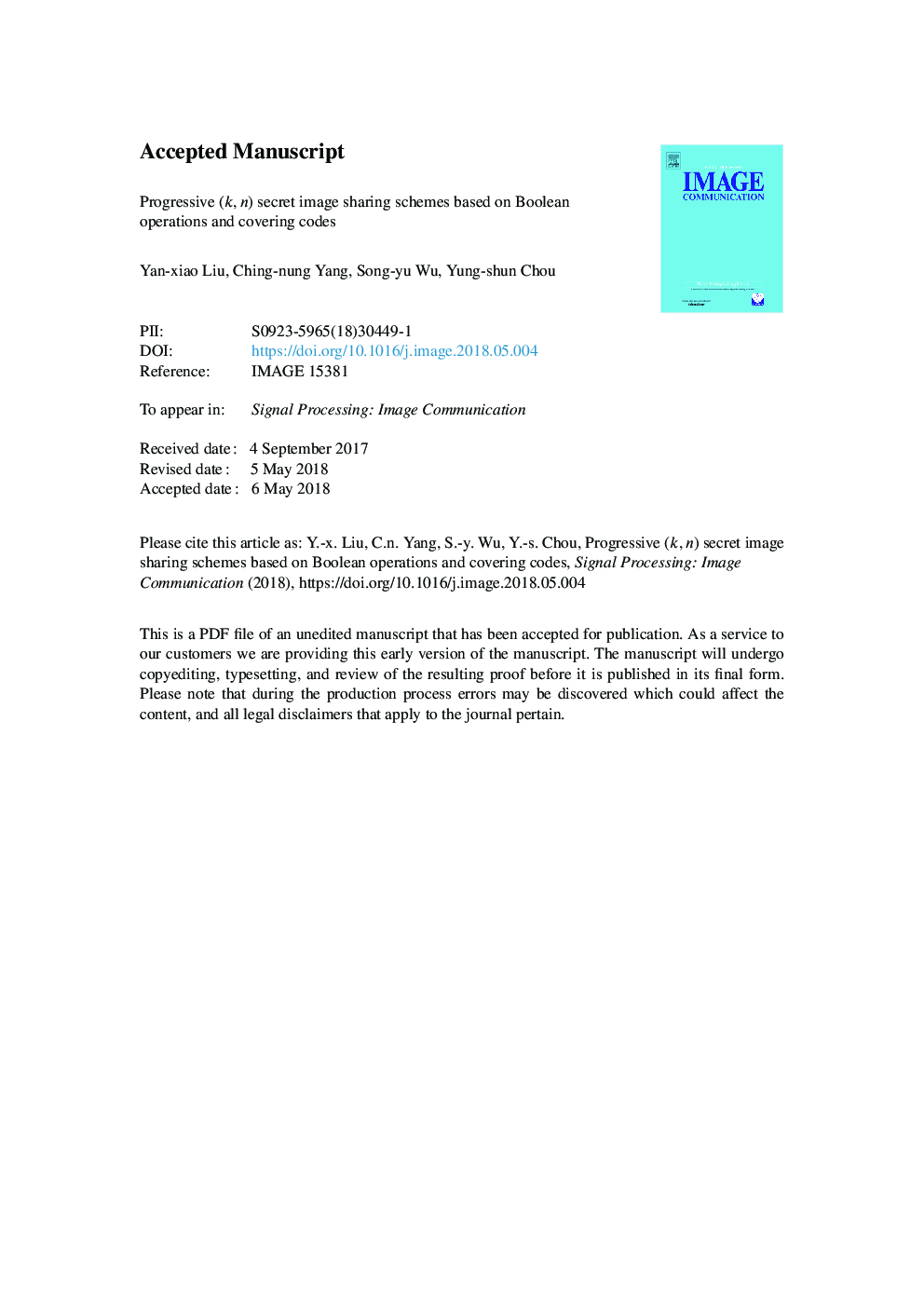| Article ID | Journal | Published Year | Pages | File Type |
|---|---|---|---|---|
| 6941462 | Signal Processing: Image Communication | 2018 | 34 Pages |
Abstract
(k,n) progressive secret image sharing (PSIS) schemes were discussed frequently in recent years. A (k,n) PSIS scheme consists of sharing phase and reconstruction phase. During sharing phase, a secret image is encrypted into n image-shadows; while during reconstruction phase, k to n image-shadows can progressively recover the image; fewer than k image-shadows get no information on the image. Most previous PSIS schemes can be divided into two categories, polynomial based PSIS schemes and visual cryptography based PSIS schemes. Polynomial based schemes can recover high quality image with complicated cryptographic computations; visual cryptography based PSIS schemes can reconstruct image using human visual system without any cryptographic computation, however, the size of image shadow expands largely from the image and the recovered image is quality-distortion. The motivation of this work is to solving the problems in existing PSIS schemes. Thus, in this paper, we adopt three Boolean operations: bit-level XOR, COV(1,7,3) from (7,4) Hamming code and COV(2,8,4) from (8,4) shortened Hamming code to propose three (k,n) PSIS schemes. In our schemes, k to n image-shadows can decrypt randomly partial pixels on entire image, and reconstruct image progressively. Comparing with previous PSIS schemes, our schemes has smaller image-shadow size and higher quality of recovered image than visual cryptography based PSIS schemes. On the other hand, our schemes has much more efficient operations in sharing procedure and image reconstruction procedure than polynomial based PSIS schemes.
Keywords
Related Topics
Physical Sciences and Engineering
Computer Science
Computer Vision and Pattern Recognition
Authors
Yan-xiao Liu, Ching-Nung Yang, Song-yu Wu, Yung-shun Chou,
